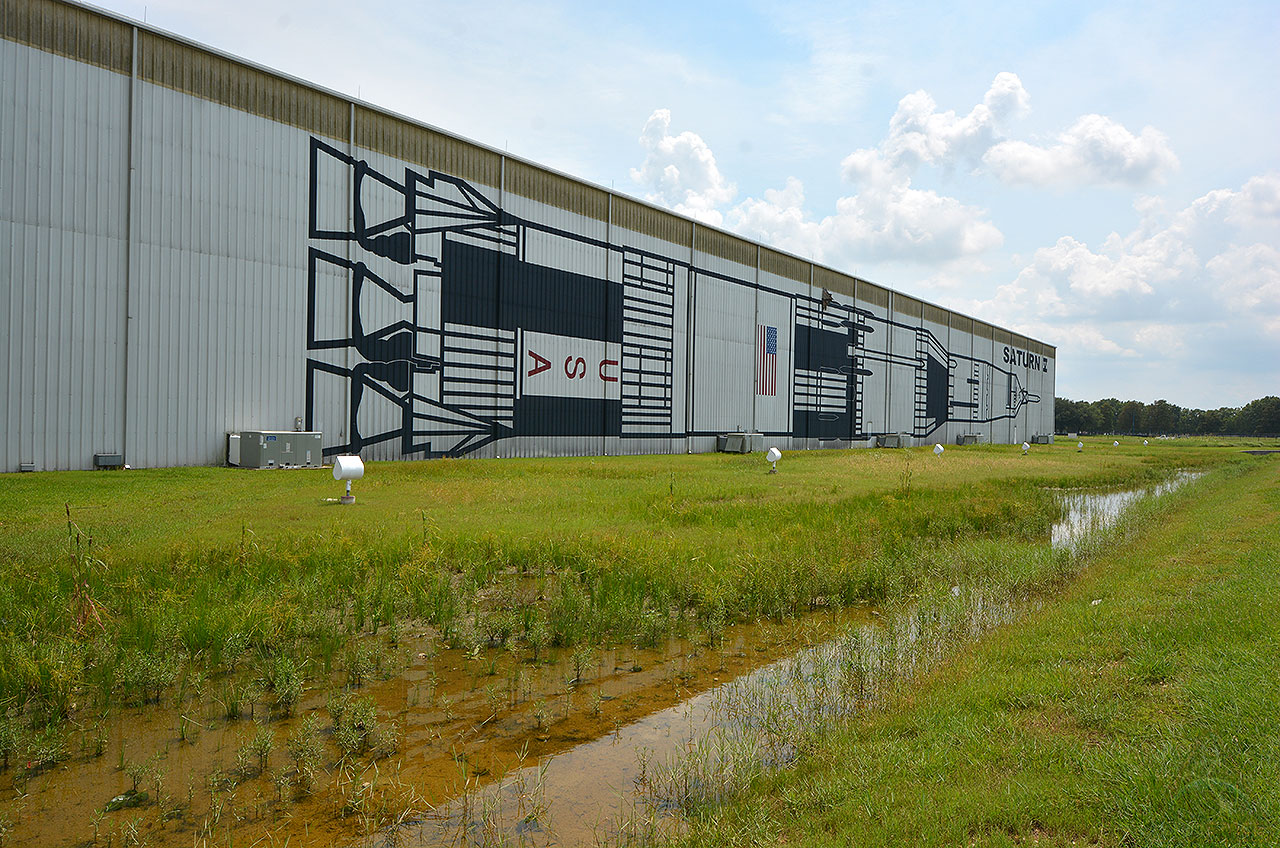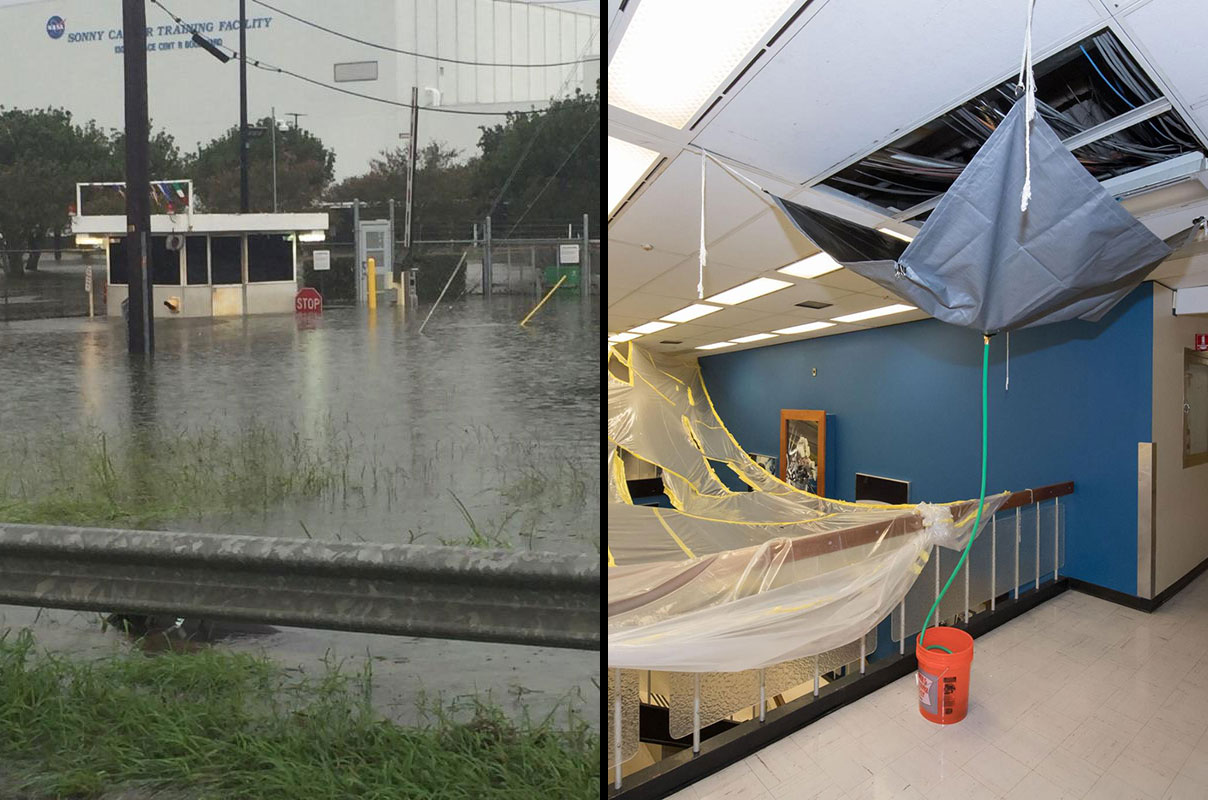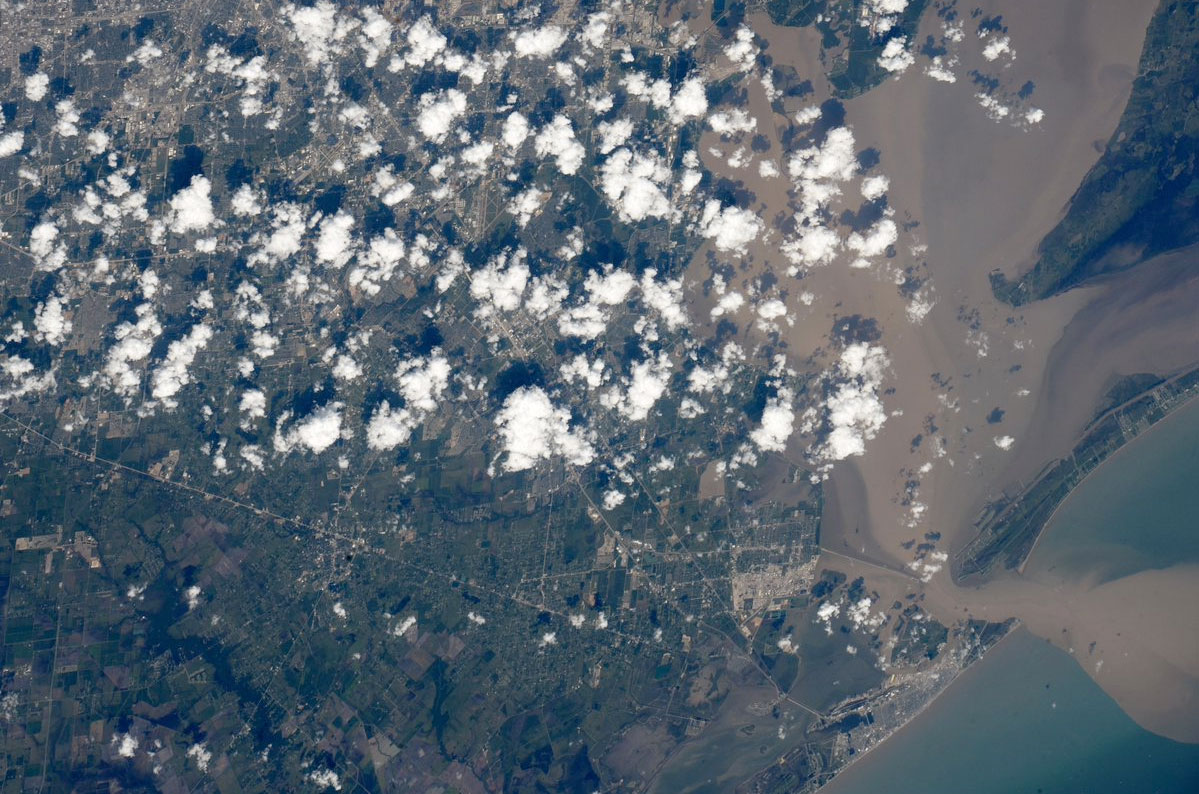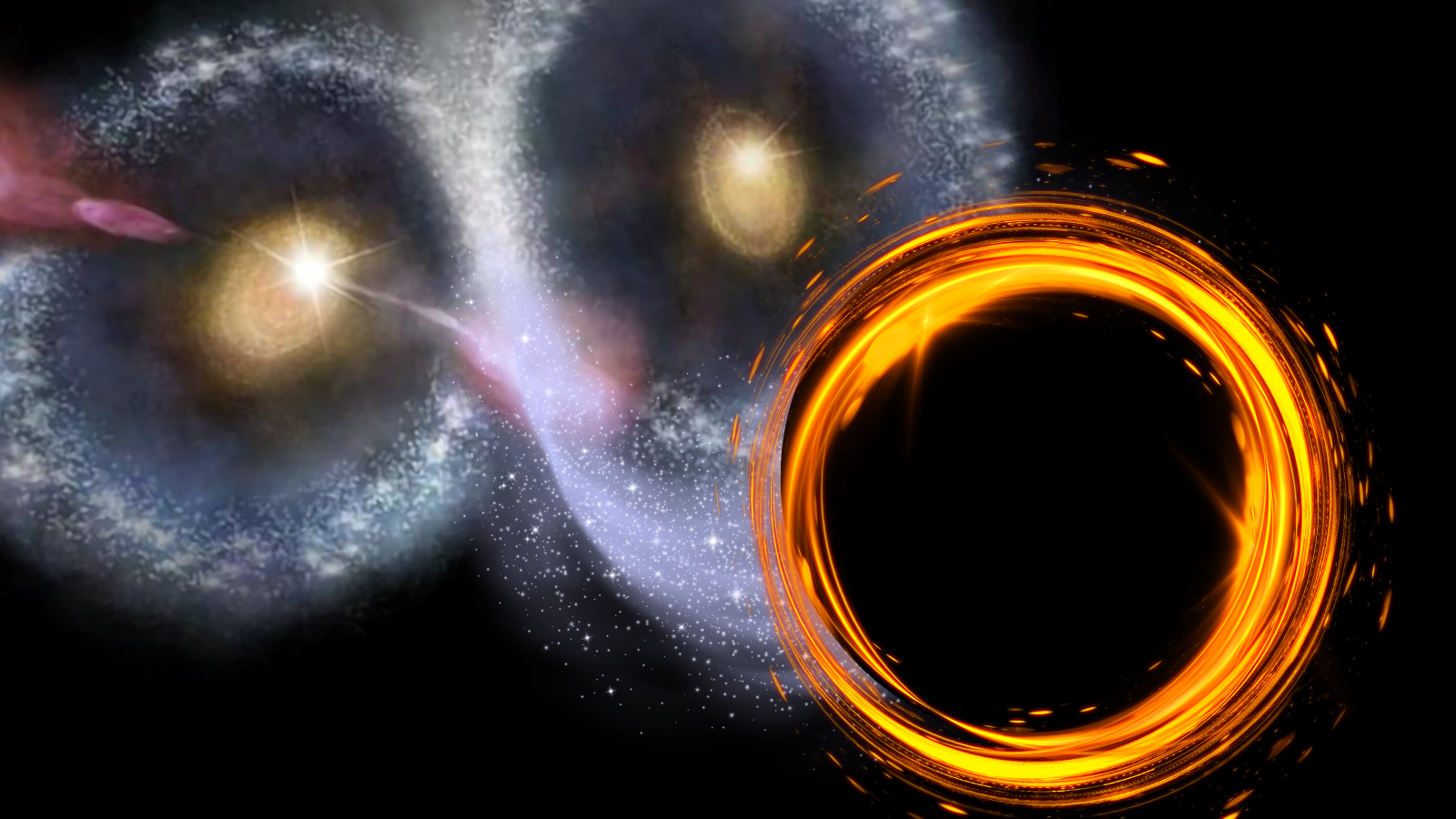Saturn V and the Storm: Houston's NASA Landmarks Weather Hurricane Harvey

HOUSTON — Some of Houston's largest and most iconic landmarks — historic NASA rockets and spacecraft — weathered Hurricane Harvey and are now accessible to the public just one week after the storm flooded significant parts of the city.
One of only three remaining Saturn V moon rockets, which since 2005 has been sheltered inside a temporary building designed to stand for just 10 years, reopened to tourists on Saturday (Sept. 2), as the remnants from the tropical storm continued to dry out in a drainage ditch running the length of the 363-foot-long booster.
"Saturn V rocket [looks] good," stated JSC SOS, a Twitter account providing official updates on the status of Johnson Space Center emergencies, on Saturday. [Hurricane Harvey: Photos of the Massive Storm from Space]
Indeed, other than some large running fans and wet floor signs pushed off into the corner, there was little sign of any impact to the 50-year-old artifact. Sources familiar with the situation reported some water intrusion on the floor of the building, but that it was cleaned up by late last week.
Space Center Houston, the independent, non-profit visitor center for Johnson Space Center, which operates the tours to see the Saturn V, fared even better.
"The center was secured throughout this unprecedented weather event and did not flood," William Harris, president and CEO of Space Center Houston, said in a statement.
Space from the storm
Space Center Houston, which among its galleries displays Mercury, Gemini and Apollo spacecraft and other artifacts on loan from NASA and the Smithsonian, re-opened to the public on Saturday.
Breaking space news, the latest updates on rocket launches, skywatching events and more!
During the height of the tropical storm, an online weather cam showed that the center's towering outdoor display of NASA's original Shuttle Carrier Aircraft, a modified Boeing 747 jumbo jet, and a walkthrough replica of a space shuttle orbiter stood up to unrelenting downpour of rain. A week later, Independence Plaza was dry and available for tours.
"Our hearts go out to all of those affected by Hurricane Harvey's winds, torrential rain and devastating flooding," wrote Harris. "The property damage in Texas is immense, but it pales in comparison to the loss of life suffered from this natural disaster."
"As recovery begins, it's important to return to our normal life routines," Harris continued. "We hope this provides our community with a clean, safe environment to cool off, take a break and provide all visitors with a place to burn off some energy while being inspired by the wonders of space exploration."
From Saturday through Monday, Space Center Houston reduced its admission fee by half to $15, and pledged to donate a third of all admissions to Hurricane Harvey relief efforts. It also extended free parking to its visitors.
'Ad Astra Per Aquam'
While the Saturn V building went largely unscathed, other NASA facilities at Johnson Space Center took on damage. By the time Harvey moved away from Houston, NASA had measured more than 42 inches of rain falling on the center.
"JSC experienced significant flooding during the heaviest rains, but the main campus buildings did not flood," wrote Ellen Ochoa, Johnson Space Center director and a former astronaut, in a Sept. 1 letter to the JSC community. "A few buildings experienced some roof leaks, resulting in water in some offices."
On site, Johnson's video and photography laboratory, which processes the imagery downlinked from the crew on the International Space Station, suffered significant water intrusion, requiring tarps being suspended from the ceiling. During the storm, NASA routed the orbiting outpost's video through its back-up control center at the Marshall Space Flight Center in Huntsville, Alabama.
The Christopher C. Kraft, Jr. Mission Control Center's roof also leaked in several places, but a team of space station flight controllers rode out Harvey at their console, sleeping in cots and eating Meals Ready to Eat (MREs).
The same was true for the team overseeing the ongoing testing of the James Webb Space Telescope (JWST), the successor to the Hubble Space Telescope, in the center's Apollo-legacy vacuum chamber facility. The telescope and test chamber remained in good shape, but leaks resulted in damage to the facility's open high-bay area.
Other areas impacted by the storm included the Jake Garn Training Facility, which houses the space station's systems simulation mock-up facility, and off-site, on the NASA side of Ellington Field, an estimated three inches of water made it into the aircraft hangars and office spaces.
"The Sonny Carter Training Facility was hit especially hard with rising water," reported Ochoa, referring to the off-site neutral buoyancy laboratory (NBL), where astronauts train underwater for spacewalks. The first floor was extensively damaged, according to NASA.
In total, about 125 people remained on duty as Hurricane Harvey passed over the space center. A planned 45-day Human Exploration Research Analog (HERA) mission was cut short and its four-person volunteer crew and its support team were evacuated. The space mission simulation had been scheduled to end on Sept. 18.
Houston (and NASA) Strong
Sunday night (Sept. 3), NASA astronauts Peggy Whitson and Jack Fischer returned to Houston, landing at Ellington one day after touching down from the International Space Station in Kazakhstan.
"Our home is fine but so many friends and coworkers have been impacted," wrote Whitson in an email prior to leaving the station after 288 days in orbit. "Any trepidations I might have about returning in the aftermath of a hurricane are entirely eclipsed by the all those folks keeping our mission going and physically putting themselves out there to help folks who were less fortunate than us."
Johnson Space Center will re-open to all of its employees on Tuesday (Sept. 5), after being closed to all but mission essential personnel since Aug. 27.
"I ask each of you to continue to support our JSC team members most affected. Please continue to reach out to the community — people you may or may not know — with reassurance and kindness," said Ochoa. "Please continue to stay safe and Houston Strong!"
Follow collectSPACE.com on Facebook and on Twitter at @collectSPACE. Copyright 2017 collectSPACE.com. All rights reserved.

Robert Pearlman is a space historian, journalist and the founder and editor of collectSPACE.com, a daily news publication and community devoted to space history with a particular focus on how and where space exploration intersects with pop culture. Pearlman is also a contributing writer for Space.com and co-author of "Space Stations: The Art, Science, and Reality of Working in Space” published by Smithsonian Books in 2018.
In 2009, he was inducted into the U.S. Space Camp Hall of Fame in Huntsville, Alabama. In 2021, he was honored by the American Astronautical Society with the Ordway Award for Sustained Excellence in Spaceflight History. In 2023, the National Space Club Florida Committee recognized Pearlman with the Kolcum News and Communications Award for excellence in telling the space story along the Space Coast and throughout the world.



